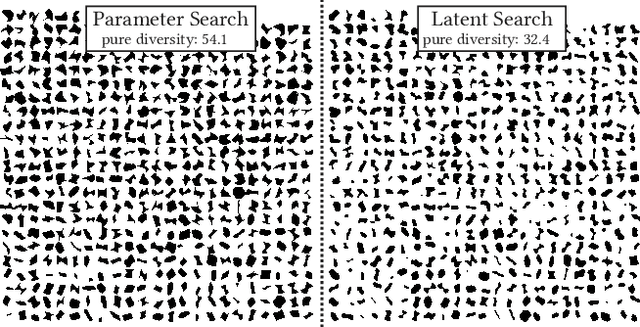Expressivity of Parameterized and Data-driven Representations in Quality Diversity Search
Paper and Code
May 10, 2021



We consider multi-solution optimization and generative models for the generation of diverse artifacts and the discovery of novel solutions. In cases where the domain's factors of variation are unknown or too complex to encode manually, generative models can provide a learned latent space to approximate these factors. When used as a search space, however, the range and diversity of possible outputs are limited to the expressivity and generative capabilities of the learned model. We compare the output diversity of a quality diversity evolutionary search performed in two different search spaces: 1) a predefined parameterized space and 2) the latent space of a variational autoencoder model. We find that the search on an explicit parametric encoding creates more diverse artifact sets than searching the latent space. A learned model is better at interpolating between known data points than at extrapolating or expanding towards unseen examples. We recommend using a generative model's latent space primarily to measure similarity between artifacts rather than for search and generation. Whenever a parametric encoding is obtainable, it should be preferred over a learned representation as it produces a higher diversity of solutions.
 Add to Chrome
Add to Chrome Add to Firefox
Add to Firefox Add to Edge
Add to Edge